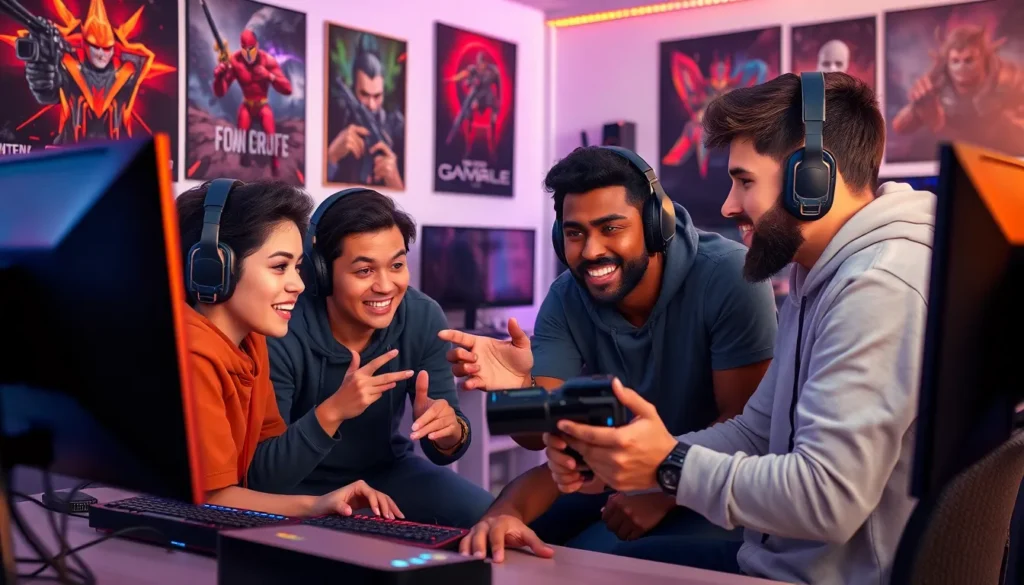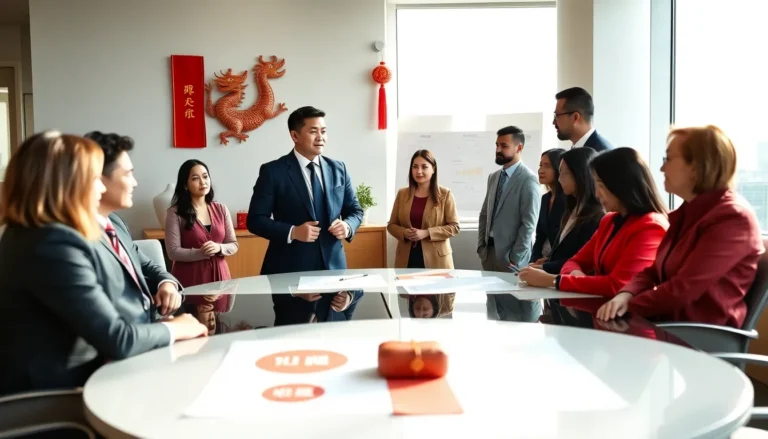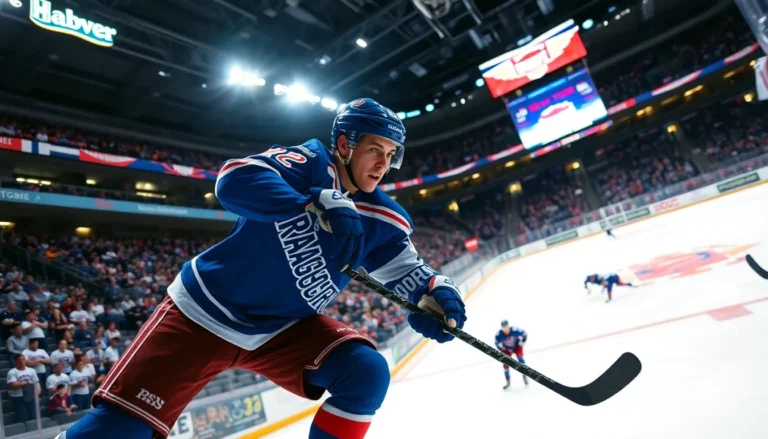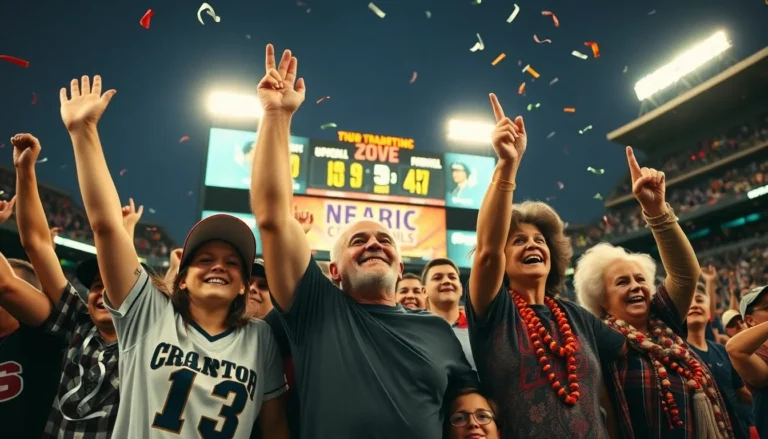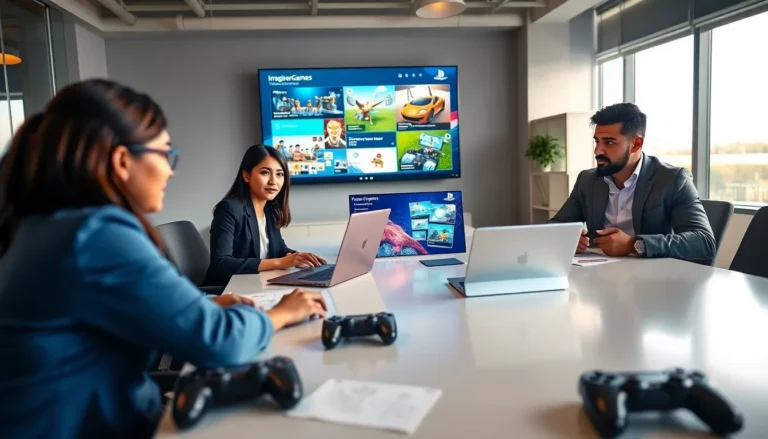Table of Contents
ToggleIn the high-octane world of first-person shooters, forming an unbeatable FPS squad is as crucial as finding the perfect weapon loadout. It’s not just about individual skill; it’s about teamwork, strategy, and maybe a little bit of friendly banter. After all, who doesn’t love a good laugh while dodging virtual bullets?
Overview of FPS Squad
An FPS squad refers to a group of players who collaborate within first-person shooter games. Effective squads blend individual skills with strategic teamwork.
What Is an FPS Squad?
An FPS squad comprises players working together to achieve specific objectives in a game. Generally, these squads consist of four to six members, allowing for diverse roles like support, sniper, and assault. Communication plays a crucial role in coordinating tactics and executing plans during gameplay. Players share resources and information to enhance their collective performance. This dynamic fosters camaraderie and encourages players to develop their skills.
Importance in Team-Based Gameplay
In team-based gameplay, an FPS squad significantly impacts the overall success of the group. Strong coordination among squad members leads to improved strategic decisions and execution. Players experienced in various roles provide a tactical advantage over opponents. Additionally, a cohesive squad increases morale, making the gaming experience more enjoyable. Winning games boosts confidence and reinforces teamwork, creating lasting friendships among players. Investing time in squad development enhances gameplay and deepens connections among team members.
Gameplay Mechanics
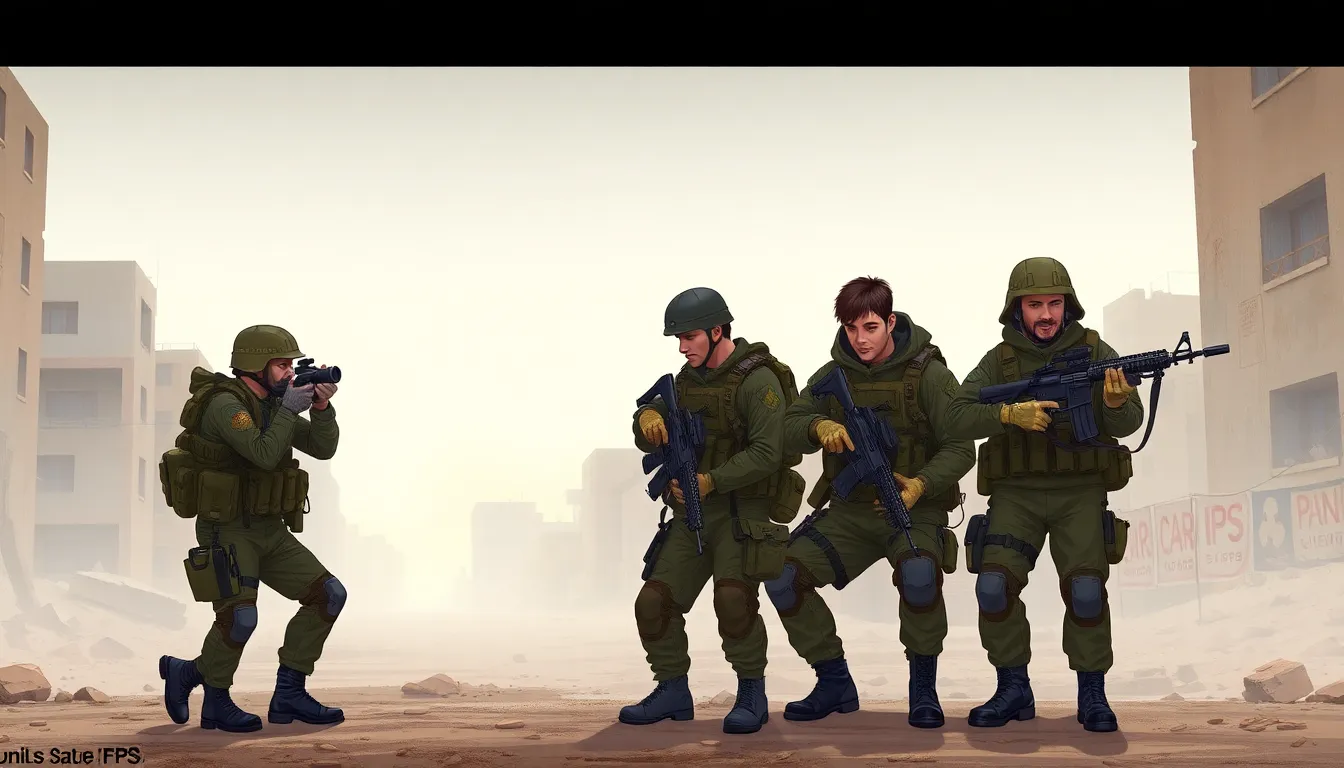
Gameplay mechanics in FPS squads focus on cooperation and tactical execution. Understanding roles and communication enhances team effectiveness.
Roles Within an FPS Squad
Each squad member plays a vital role contributing to the team’s objectives. Support players provide healing and ammunition, ensuring their teammates remain operational. Snipers excel at long-range engagements, offering crucial cover and strategic positioning. Assault players lead front-line attacks, engaging enemies directly. Flex players adapt, switching roles as needed based on the evolving battlefield dynamic. Varied roles foster synergy, allowing squads to counter different challenges effectively.
Communication Strategies
Effective communication forms the backbone of a successful FPS squad. Voice chat enables real-time coordination, facilitating quicker tactical adjustments during intense situations. Strategic callouts help pinpoint enemy locations and share critical information about objectives. Non-verbal cues, such as in-game markers, support silent teamwork when discretion is necessary. Regular practice enhances familiarity with teammates’ communication styles, streamlining responses in high-pressure scenarios. Overall, clear communication drives mission success and enhances the squad’s overall performance.
Game Modes
An FPS squad engages in various game modes, each offering unique challenges and strategies. Teams can experience different gameplay styles that enhance collaboration and teamwork.
Cooperative Missions
Cooperative missions emphasize working together toward a common objective. Players often face waves of enemies or challenging scenarios requiring strategic planning. Squads must communicate effectively to share information, coordinate attacks, and distribute resources such as ammunition and health packs. Completing objectives rewards players with experience points and unlocks new gear, enhancing future missions. Consistent practice in cooperative settings strengthens team dynamics, builds trust, and refines skills that are essential during high-stakes missions.
Competitive Matches
Competitive matches test the skills of each squad member against rival teams. Success depends on individual performance as well as overall team coordination. Players choose their roles and adapt strategies to counter opponents effectively. Teams earn ranks based on match outcomes, creating an environment that fosters improvement and healthy competition. Regular participation in competitive play helps squads identify strengths and weaknesses while enhancing communication under pressure. Tactics evolve as players learn from defeats and victories alike, sharpening their edge in future matches.
Popular FPS Squad Games
First-person shooter squad games offer thrilling gameplay that revolves around teamwork and strategy. Players engage in diverse missions, showcasing various skills, which enhances the overall experience.
Overview of Top Titles
Popular FPS squad games include Call of Duty: Warzone, Rainbow Six Siege, and Apex Legends. Call of Duty: Warzone emphasizes fast-paced combat and extensive weapon customization. Rainbow Six Siege prioritizes tactical gameplay and destructible environments, fostering strategic planning. Apex Legends brings unique character abilities into squad dynamics, enhancing teamwork.
Unique Features of Each Game
Each game presents distinct features that attract players. Call of Duty: Warzone includes a huge map featuring different terrains and loot systems that encourage exploration. Rainbow Six Siege focuses on operators with varied gadgets, promoting unique strategies tailored to team needs. Apex Legends incorporates a ping system that facilitates quick communication, making it easier to coordinate without voice chat. Such features make each title appealing to different playstyles, enriching the FPS squad experience.
Tips for Building an Effective FPS Squad
Forming an effective FPS squad requires strategic planning and teamwork. Following the appropriate strategies can enhance overall performance.
Team Composition Strategies
Diverse roles within a squad play a critical role in achieving success. Creating balanced teams should include support, assault, sniper, and flexible players. Each member’s strength complements others’ weaknesses. For instance, support players maintain the team’s health and resources, while assault players initiate frontline engagements. Snipers excel at providing long-range cover, allowing the squad to advance safely. Aligning playstyles with team objectives enhances synergy, ensuring each role contributes meaningfully to mission success. Committing to ongoing evaluations of team composition strengthens adaptability against various opponents.
Enhancing Team Coordination
Clear communication remains essential for effective squad operations. Utilizing voice chat facilitates real-time strategies and quick decision-making during intense firefights. Frequent callouts enhance situational awareness, allowing team members to react swiftly. Emphasizing respect for each player’s communication style fosters a more cooperative environment. Moreover, conducting regular practice sessions helps build familiarity with teammates, improving coordination under pressure. Establishing protocols for specific scenarios ensures that team members respond consistently and efficiently. Visual cues and gestures can complement spoken communication, further strengthening collaboration and increasing likelihood of mission success.
Building a successful FPS squad is more than just gathering skilled players. It requires a blend of strategy communication and camaraderie to thrive in competitive environments. The joy of teamwork and shared victories creates an engaging experience that elevates gameplay.
Each member’s role contributes to the squad’s overall effectiveness making it essential to have a balanced composition. Regular practice and clear communication are key to honing these dynamics. By embracing these principles players can enhance their performance and forge lasting friendships in the gaming community.
Ultimately investing time in developing a cohesive squad pays off in both skill improvement and enjoyment, making every match a memorable adventure.

